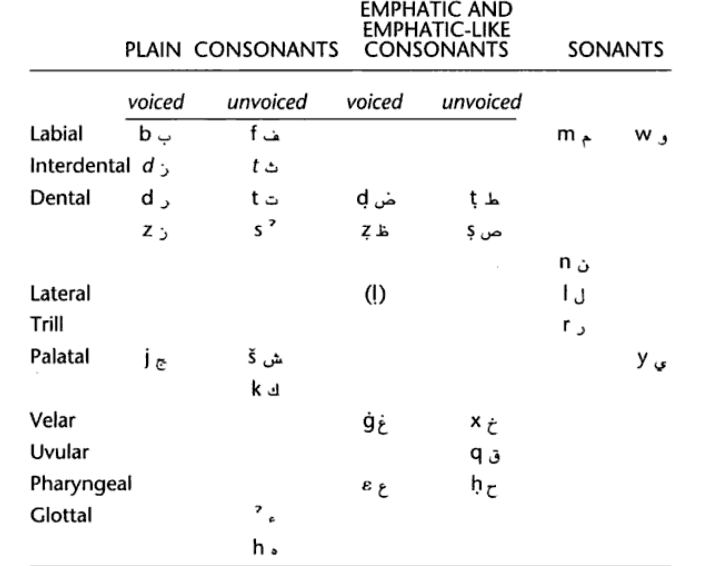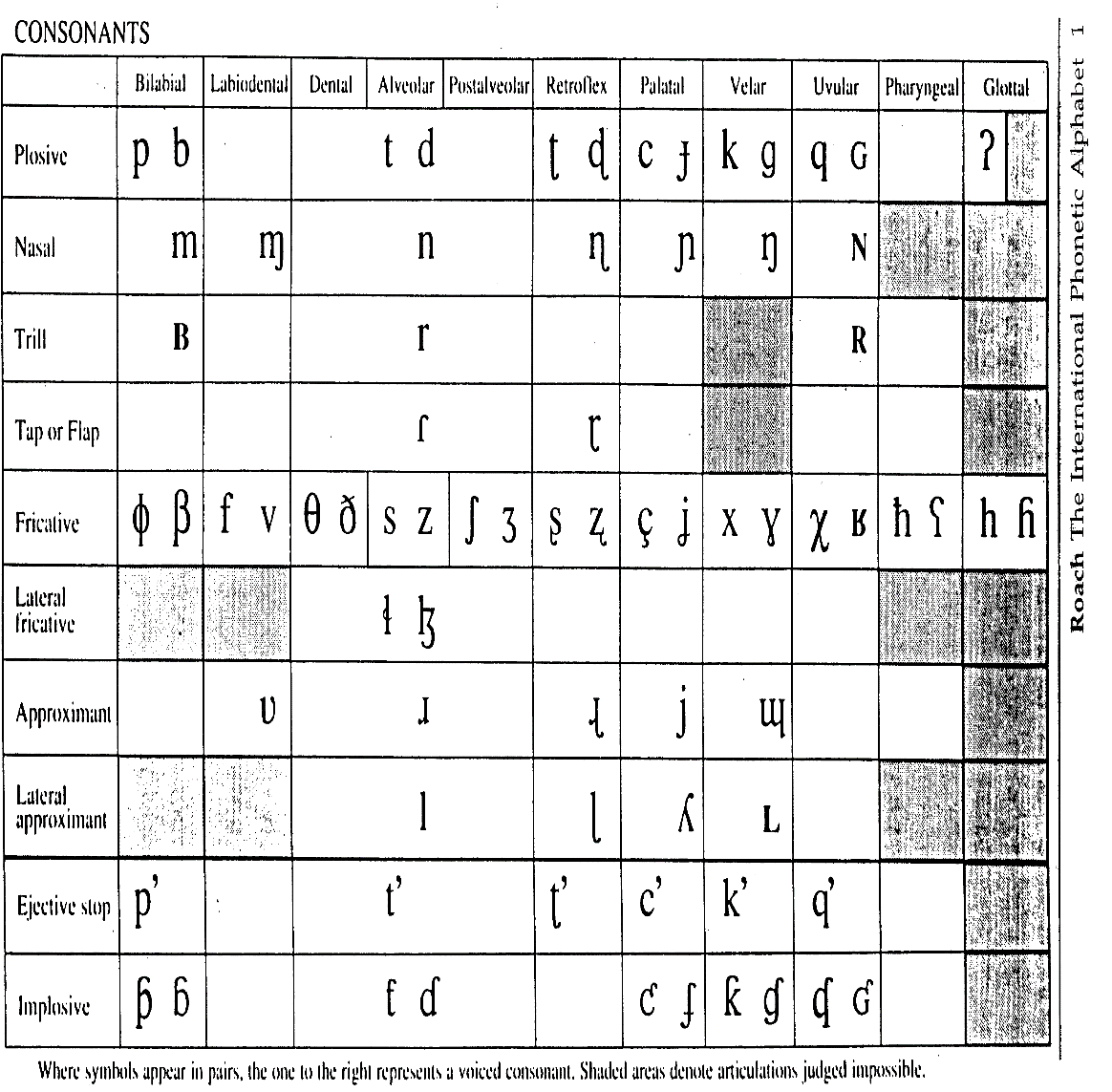Learners’ Background
As I am a teacher of the English language at the College of Technology in Saudi Arabia, I am training students for commercial and technical careers. It is recognized that the English language is an international language of business and technology and, therefore, students should have an excellent command of English for successful completion of the course. As a teacher of a foreign language, I had to encounter difficulties in providing ESL learners with the basics of the English language.
First of all, the students have different levels of foreign language proficiency, which considerably hinders the process of study. Secondly, the learners have considerable difficulties in handling the English language because of the differences in grammatical and syntactical structures of the Arabic language and the English language. In this regard, it is necessary to identify the peculiarities of both languages with regard to the difficulties in writing and pronouncing words because little attention is paid to these problems (Smith and Swan, 2001: 195).
Introduction
General Characteristic. The Arabic Language refers to the Central Semitic language and it is closely related to other languages of this family, such as the Neo-Aramaic languages and Hebrew (Bateson, 2003:1). It should also be stressed that Arabic is also known for its “root and pattern system” being the main feature of the Semitic languages. Traditionally, roots are composed of three consonants groups that are accompanied by a variety of vowel patterns (Department of Linguistics, 2010).
The language is the most spread one in the Middle East and, therefore, it has a great number of language variations and spoken dialects. However, Modern Standard Arabic is chosen for study in schools and universities. This Arabic language is studying by students as their native one whereas their second language is English.
Arabic writing system and its relation to speech. Arabic writing system has certain important peculiarities that distinguish it from the English language. Thus, Arabic is traditionally written from right to left in a cursive script (Bateson, 2003:56). It does not have a capitalization system and, therefore, the names and titles are presented in lower case. The punctuation system of the Arabic language is written in direct order (Bateson, 2003:6).
In order to distinguish the consonants, a specific system of dots is used. The writing system of the Arabic language has a considerable impact on speech. Due to the fact that there some dots and signs that are only pronounced in the connected speech. As a result, Arabic writing is relatively autonomous from the phonographic system and, thus, it allows us to pronounce words in the connected speech differently (Coulmas, 2003:125).
Phonology Analysis
There are 28 letters in the Arabic Language and its phonological system differs from that of English. Hence, it counts 32 consonants and 8 vowels. Among them, there are three long vowels, three short vowels, and two diphthongs. Despite there are differences in consonant and vowel systems, there are eighteen common consonants in both languages: [b, t, d, k, s, j, f, z, s, h, l, m, n, w, r, θ, ð]. They correspond to Arabic ones: [t, q, d, h, x, g, s] (Bateson, 2003:4)
Phonemic level
Consonants
With regard to its specific system of word formation, the Arabic language has some peculiarities in the phonemic system. The language has specific groups of “emphatic” consonants that affect the lowering of adjacent vowels.

Relying on the above table the English language has equivalent consonants in Arabic. For instance here are some of the common elements in both languages:
- t as in tool ﺐ (voiced bilabial stop);
- th as in thin ﻦ (voiceless inter-dental fricative );
- d as indoor (heavy d) ﺹ (voiced, post-dental, emphatic stop);
- h as in heavy ﻛ (voiceless, pharyngeal constricted fricative). (Bateson, 2003:6), etc.
The emphatics have correspondent pairs (voiced-voiceless), except for [إ] which is not officially considered the letter of the alphabet. In addition, there are some consonants that are used as inflectional or derivational affixes ([m, w, t, s, n, and y]). Such sounds as [h], [l], [d], and [k] appear in the particles system only and participate in different derivational processes (Bateson, 2003:5).
It should be admitted that the consonant systems of the English and Arabic languages are rather different, although they have a number of similar aspects. Hence, Arabic differs greatly from English by the presence of back-of-the-track sounds. In particular, the former has pharyngeal sounds, uvular sounds, and emphatic sounds that construct the framework of the language consonant system.

From the English perspectives, the Arabic language does not have analogs of such sounds as [p, v, g, tʃ, ŋ, and g]. The most problematic sound for the Arabic learners is sound [ph] that should be pronounced with aspiration. Such a problem can lead to serious phonological mispronunciation (Odisho, 2005:36).
Consonant clusters
Arabic has fewer amounts of consonants than English. Some of them (two-segment: pr, pl, gr, thr, the, sp, and three-segment: spr, skr, str, and spl) do not have equivalents in the Arabic language, not mentioning four-segment clusters. This is predetermined by peculiarities of word formation in Arabic.
Vowels
The vowels of the Arabic language are strongly dependent on the consonant environment and, therefore, they can produce great variants. There are three basic vowels in Arabic ([a], [i], and [u]) and two diphthongs ([iy] and [uw]). The vowels can be short and long, depending on the position in a word (Bateson, 2003:6).
Unlike Arabic, the English vowel system has a greater impact on consonants. It should also be emphasized that it has a more detailed vowel system and categories. The major difference between Arabic and English systems consists of qualitative discrepancies, which is much more different in the Arabic language. Therefore, it might create some difficulties in pronunciation in terms of tongue position, tenseness and laxness of articulation, etc (Odisho, 2005:46).
Prosodic level
Word Stress
The stress of the Arabic words usually falls on the longest syllable at the end of the word, or on its first syllable. Besides, one cannot put the stress on more than a third syllable. So, while reading, short vowels standing, in the end, can be dropped or shortened (Bateson, 2003:89).
In comparison with Arabic, the English language has completely different principles of word stress. In particular, the stress is traditionally put on the first syllable. If the word is too long it has even two stresses. Besides, the stress can serve as an important method for the formation of parts of speech. In order to eliminate the problems of mispronunciation, the Arabic learners of English should practice pronouncing noun-verb categories of speech to grasp the essence of stressing (Odisho, 2005:95).
Rhythm
The rhythm in Arabic is largely predetermined by the principles of stress. Due to the fact, that word stress is traditionally put at the end of the word can distort the meaning of the English word that can be stressed in the same way. Besides, the Arabic language vowels are not unlikely to be reduced in the connected speech.
With regard to the above-stated, the main technique that the Arabian students should master is that of vowel reduction. For instance, instead of pronouncing the world amiable as [emi’ablə], it is imperative to pronounce as [‘ǽmiəbl] (Odisho, 2005:96). The importance of reduction and neutralization has a huge impact on the contextual characteristics of the text (Pennington, 1996:144).
Intonation
Irrespective of language rhythmic systems, Arabic and English intonation is based on the analysis of rhythmic patterns which do not affect semantic patterns. However, intonation both in the English language and the Arabic language is an indicator of semantic, attitudinal, and syntactic features of the utterance (Odisho 94). Intonation is especially important for presenting the information in English. The intonation reveals the modality of the utterance and the significance of the utterance (Halliday, 1985: 4).
Summary
A thorough analysis of the phonemic and prosodic levels of the Arabic and English languages has revealed considerable differences in consonant and vowel systems that influence the pronunciation patterns. Considering the phonemic level, the greatest difficulties for the Arabic learners of English consists of mastering the sound [p] that should be pronounced with aspiration, in the qualitative presentation of vowels, and in the difference of consonants categories in both languages. Pursuant to prosodic features, ESL learners will have to cope with stress placement of the English words, rhythmic patterns, and pitch movement, because pronunciation in English also has a lexical function.
While studying ESL students, I often face the problem of wrong word stress and intonation patterns. This considerably distorts the meaning word and the entire utterance. In my opinion, this is predetermined by the fact, that teaching theory pays insufficient attention to the problems of intonation and phonology instead making emphasis on grammar.
Reference List
Bateson, M. C. 2003. Arabic Language handbook. US: Georgetown University Press.
Coulmas, F. 2003. Writing systems: an introduction to their linguistic analysis. UK: Cambridge University Press.
Department of Linguistics 2010. Arabic. University of Ohio. Web.
Halliday, M. A. K. 1985. Spoken language: prosodic features. Spoken & Written Language. Australia: Deaking University Press.
Odisho, Edward. 2005. Techniques of Teaching Comparative Pronunciation in Arabic and English. US: Gorgias Press LLC.
Pennington, M. 1996. Contextual effect related to stress and prosodic grouping. Phonology in English Language Teaching. UK: Longman.
Smith, B., and Swan, M. 2001 Learner English UK: Cambridge University Press.